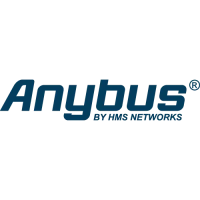Basic Operation 19
Doc.Id. HMSI-27-212
Anybus CompactCom 40 EtherNet/IP
Doc.Rev. 1.5
2.5 Network Data Exchange
2.5.1 Application Data
Application Data Instances (ADIs) are represented through the ADI Object (CIP). Each instance within
this objects corresponds directly to an instance in the Application Data Object on the host application
side.
Accessible range of ADIs is 1 to 65535.
See also...
• “Parameter Object (0Fh)” on page 74 (CIP)
• “ADI Object (A2h)” on page 83 (CIP)
2.5.2 Process Data
Process Data is represented as dedicated instances in the Assembly Object (CIP).
See also...
• “Assembly Object (04h)” on page 67 (CIP)
• “Connection Manager (06h)” on page 70 (CIP)
2.5.3 Translation of Data Types
The Anybus data types are translated to CIP-standard and vice versa as follows:
Anybus Data Type CIP Data Type Comments
BOOL BOOL Each ADI element of this type occupies one byte.
ENUM USINT
SINT8 SINT
UINT8 USINT
SINT16 INT Each ADI element of this type occupies two bytes.
UINT16 UINT
SINT32 DINT Each ADI element of this type occupies four bytes.
UINT32 UDINT
FLOAT REAL
CHAR SHORT_STRING SHORT_STRING consists of a single-byte length field (which in this case
represents the number of ADI elements) followed by the actual character data
(in this case the actual ADI elements). This means that a 10-character string
occupies 11 bytes.
SINT64 LINT Each ADI element of this type occupies eight bytes.
UINT64 ULINT
BITS8 BYTE Each ADI element of this type occupies one byte.
BITS16 WORD Each ADI element of this type occupies two bytes.
BITS32 DWORD Each ADI element of this type occupies four bytes.
OCTET USINT
BITS1-7 BYTE Bit fields of size 1 - 7
PAD0-8 BYTE Bit fields of size 0 - 8 used for padding
PAD9-16 BYTE Bit fields of size 9 - 16 used for padding

